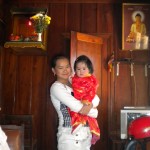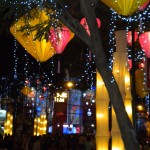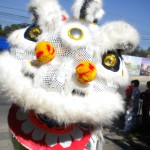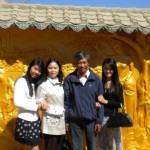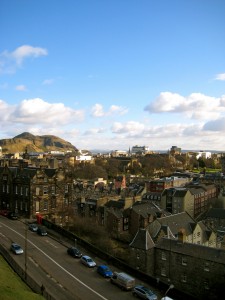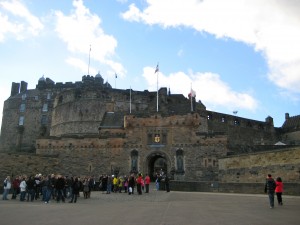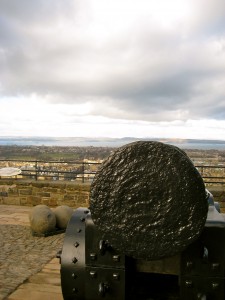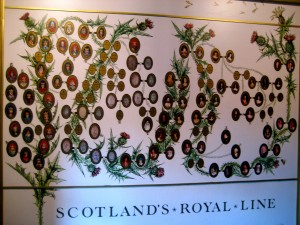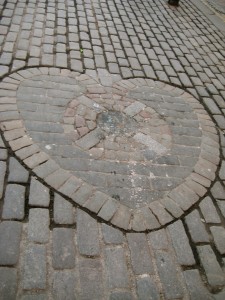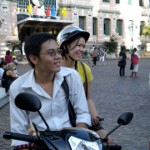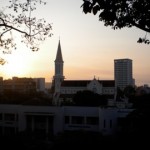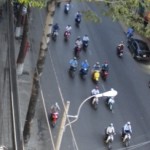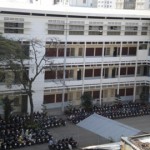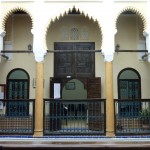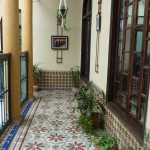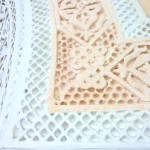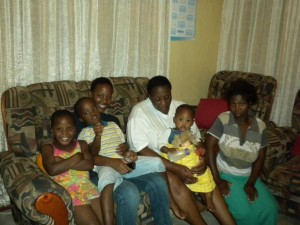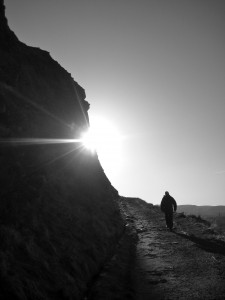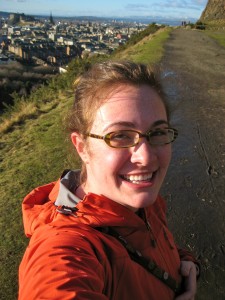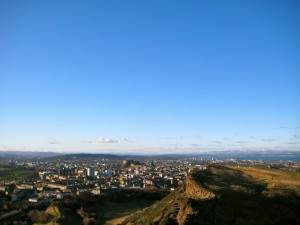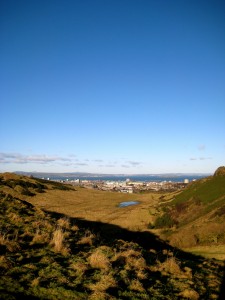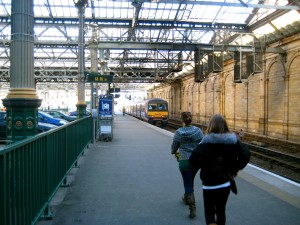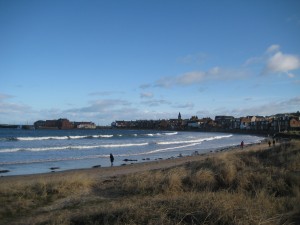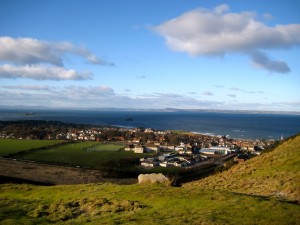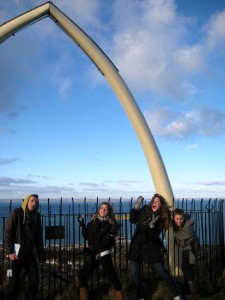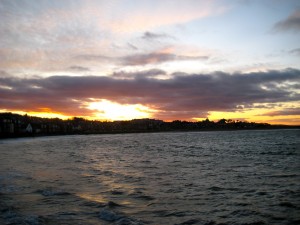As a traveler, you indulge me Spain. You indulge my love for history, and you indulge my (new) love for pastries. You even tease my apathy towards art, with your Gothic Cathedrals, your Grand Mosque, your Picassos and your Gaudis. Oh, and your Sagrada Familias too. How dare you impress me like that? Let us not forget the ¨Baños Árabes¨. Your Arab history left us with a spa; I mean really, is that even allowed? Spain, you outdid yourself with that one.
Last week I visited Córdoba, Sevilla and Barcelona. Córdoba and Sevilla were with my program, and I went to Barcelona with a few friends.
In Córdoba we saw a clash of everything. This small but incredibly significant (historically speaking) town is in Andalusia, formerly called al-Andalus when it was under Muslim rule. Before the Reconquista (when the Christians kicked out the Muslims and Jews), Córdoba was the capital of the Muslim empire in the West. It is the home of the Jewish philosopher Maimonides as well as the Grand Mosque, (or ¨Mezquita¨) and the Cathedral that was later built inside. Córdoba is surprisingly small, and within two hours of walking around I had seen most of the city. From a dog´s eye view, at least. To be a bit clearer, I mean that I walked all over the city and saw the outside of buildings and museums but did not enter. For me, the city was my museum. The average building was ancient architecture, and the original cobblestone bridged the soles of my shoes with those of Maimonides several centuries earlier. I felt connected to the history of this old city as I wandered accidentally by an old castle, and got lost in the barrio Judio (Jewish Quarter). I grazed my hand across the wall of the wise, old buildings. I even spoke to them in my mind. ¨You have seen so much. You have witnessed the clashes of two of the largest religions. But you have also seen the harmony. You probably have some secrets that would really help our world, don´t you? I mean, you´re pretty old, and therefore you are probably pretty darn wise too.¨ There´s a little taste of what goes on in my mind. Did I really just put that on the internet? The fact that I speak to walls?
After I finished giving myself a tour of the city (and once I finished my conversations with inanimate objects) I was taken on a professional tour of the Grand Mosque. This is where I truly felt a connection with the past, but not in the way you would think.
Before I was born, my parents and my 1-year-old brother lived in Madrid where my father went to school for a year. My parents and my brother took a trip to Córdoba, and while many important events have taken place in the Mezquita, nothing, I´m sure, was quite like the day my brother took his first steps. Yes, my brother learned to walk in THE GRAND MOSQUE IN CÓRDOBA! I have grown up with the telling of this event, listening to how he clumsily, cautiously walked from pillar to pillar. While I found the history of the Mezquita fascinating, nothing was quite as wonderful as knowing that I was in the place where Ben took his first steps. Yes, I was also standing in the remains of two great empires, the tangible and most telling evidence of the Reconquista, but nothing the guide told us about the history of the Mosque-turned-Cathedral could have been cooler to me than the fact that Ben learned to walk here. The guide probably could have said ¨Hey, I see the Ghosts of Isabel and Ferdinand standing next to you¨and I would have replied¨That´s cool. ¨Nice to meet you Mr. and Mrs. Reyes Católicas. But did you know that my brother learned to walk here?¨
The Mezquita truly is amazing and I was able to appreciate its grandeur despite the distraction of my personal family history. There is everything from Gothic to baroque, to a crucified Jesus hanging beneath the typical arches of Arab architecture, while catholic saints solemnly stare in the direction of Mecca. Our guide reminded us plenty of times that this was no longer a Mosque, it was a Catholic Cathedral. But honestly, I could think of it neither as a Cathedral nor as a Mosque but as a testament to the dark past and violent interactions between the Muslims and Christians. For me it stood as a reminder of the beauty of harmony (as I imagined baby Ben roaming through the hundreds of pillars) and the pain of conflict. I mean seriously, did they have to build there Cathedral INSIDE the Mosque? That just seems childish. We get it, you re-conquered the south. You built it INSIDE? That´s just lemon juice on a papercut right there. However, while the Cathedral inside the Mosque is not typically seen as harmonious, after all these centuries the two seemed to work together in their grandeur. But between you and me, the Grand Mosque definitely won the´ I´m really big and cool¨competition.
Let´s move on to a more relaxing historical site, the Arab baths. This is where, several centuries ago the Arabs–take a guess–bathed! The baths consist of three rooms: one with glacier water baths, one with medium temperature baths, and one with what feels like baths of boiled water. In Granada, I´m forced to endure luke warm showers (I have such a hard life!) so the room with the hottest baths was my temporary heaven. When I stepped in for the fist time, I felt a mix of scalding pain, delight with the burn, and thoughts like ¨Oh my god this is where Abderraman and the like used to bathe!¨ And you won´t believe this, but my program paid for everyone to get a massage! It was a wonderful day of history and relaxation in the colorful city of Córdoba.
That night we took a bus to Sevilla, a city much larger than Córdoba. In Sevilla we started the day with a tour of a palace that was both Muslim and Christian and one time. The Alcazar Palace has incredible geometric carvings populating nearly every flat surface. This is typical Muslim art, because in Islam one is not permitted to depict sentient images in any way.
Once again, we went through the old Jewish quarter, and we were reminded, quite briefly in my opinion, of the massacres that took place during the Reconquista. I am Jewish by blood (my mother is Jewish) but I was raised in a very religiously relaxed household. We celebrated the big Jewish holidays like Roshashana, Yom Kippur (sometimes), Hanukkah, Passover and the occasional Shabbat. Our celebrations were done more out of tradition than devotion but I always enjoyed them tremendously. (I mean what kid wouldn´t enjoy eight nights of presents?) Anyway, I have always felt culturally Jewish, but for the most part I have not been truly religious. However, every time I go to a historically Jewish place, my Jewish blood begins to rage like the parting of the Red Sea. When I was in Israel, I became so connected to my Judaism and my heritage that I got bat Mitzvahed in Tiberius. I had only been in Israel one week, but that´s how strongly I was affected by the holy land. I felt similar sentiments when I went to one of the only remaining Synagogues (prior to the Reconquista) in Córdoba, and when I was taken through the streets of el barrio Judio in Sevilla. I´m Jewish, my people lived here. Jews walked here, worshipped here. I understand that five minutes ago I was hardly Jewish at all, but right now, I am Jewish! Jewish and proud of it babe!
Of course, after that our group was served a lunch of salad, flan, and a nice slab of pork. Right after my afternoon of fierce Jewish pride, I sit down to a lunch of pork. Like I said, the south of Spain is a land of many clashes.
Later I went to the most amazing Gothic Cathedral I probably will ever go to in my life. My roommate, Mary, is 6´1¨and let me just say, Gothic is her style! I really don´t know how tall these ceilings were, but they made me feel like an ant in a dog house. (I don´t mean to compare this Cathedral to a dog house, but for the sake of comparison, we´ll keep it). I felt smaller inside that Cathedral than I do swimming in the ocean. The Gothic style so tall because at the time it was believed that the taller the building, the closer it is to God. Gothic is dramatic, and overdone, and full of enthusiasm for the divine. This Cathedral really was reaching for the heavens on the very tips of its toes, and by golly it just may have succeeded.
Sevilla was a fun city. I wish I could have spent more time there (I only had about two days) but perhaps I will return. I left for Barcelona at nine o´clock at night and arrived at my hostel at 2:00 in the morning. While I would love to describe my travels in this fabulous city, I must do it another day. My computer is temporarily(?) out of commission so I am at an internet cafe. I have been here for about an hour and a half and I would rather not spend all my saved up travel money at this cafe. I will just say this: Barcelona is, in fact one of the greatest cities that I have ever visited. It is the city of Gaudi, the city from which Columbus first departed to the new world, the city of the ´92 Olympics, the city of the futbal team Barça (and the city of their crazy fans, for that matter), and of course the city of pick-pocketters. You will be happy to know that we left Barcelona with all our possessions. Success! We evaded those professional pick-pocketers! We even went to a ¨futbal¨game, and made it out alive. Now that there, my friend, is a success.
Next Stop: Cádiz for Carnival. The thrid largest Carnival party in the world after Rio, Brazil, and of course Rome.

